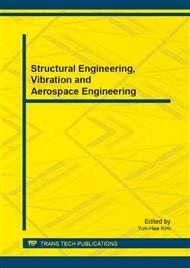p.262
p.267
p.273
p.277
p.282
p.287
p.292
p.297
p.302
Numerical Simulation on the Infrared Radiation Characteristics of S-Shaped Nozzles
Abstract:
Infrared stealth is of great importance to increase the survival ability of the aircraft. The exhaust system is the main radiation source of the aircraft at the rare hemisphere. A program using reverse Monte-Carlo method was developed to calculate the infrared radiation intensity of afterburning turbofan engine under non-afterburning condition, and simulate axisymmetric nozzle and three S-shaped nozzles with different relative eccentric distances. The results demonstrate that: the infrared intensity of S-shaped nozzle is much lower than that of axisymmetric nozzle; S-shaped nozzle can effectively reduce the maximum of IR intensity in the rear hemispheric space; the S-shaped nozzle with the relative eccentric distance of 0.5 can reduce the intensity of infrared radiation in critical detection directions effectively.
Info:
Periodical:
Pages:
282-286
Citation:
Online since:
December 2013
Authors:
Price:
Сopyright:
© 2014 Trans Tech Publications Ltd. All Rights Reserved
Share:
Citation:


